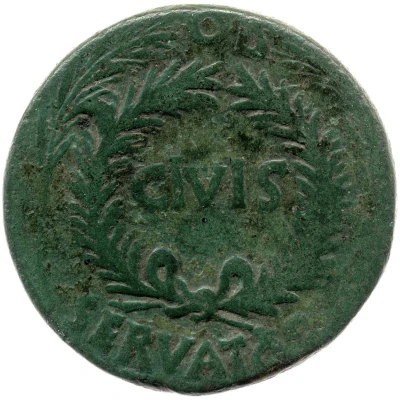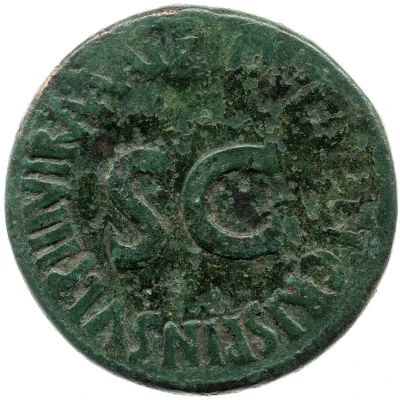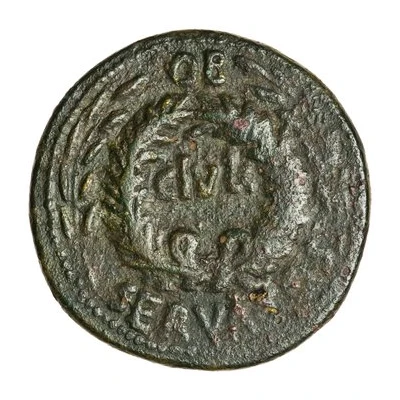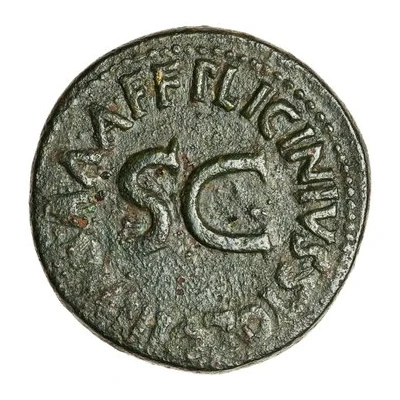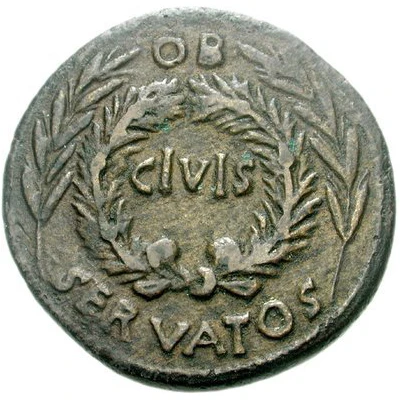
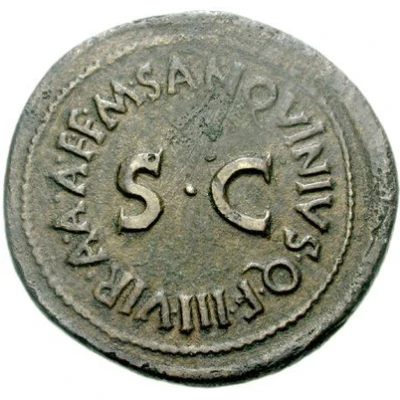

© Classical Numismatic Group, Inc.
Sestertius M SANQVINIVS Q F IIIVIR A A A F FS C 17 BC
17 BC year| Bronze | 19.7 g | 33 mm |
| Issuer | Rome › Roman Empire (27 BC - 395 AD) |
|---|---|
| Emperor | Augustus (Caius Octavius) (27 BC - 14 AD) |
| Type | Standard circulation coin |
| Year | 17 BC |
| Value | 1 Sestertius = ¼ Denarius |
| Currency | Denarius, Reform of Augustus (27 BC – AD 215) |
| Composition | Bronze |
| Weight | 19.7 g |
| Diameter | 33 mm |
| Shape | Round (irregular) |
| Technique | Hammered |
| Demonetized | Yes |
| Updated | 2024-10-06 |
| Numista | N#247822 |
|---|---|
| Rarity index | 100% |
Reverse
Legend surrounding S C.
Script: Latin
Lettering:
M SANQVINIVS Q F IIIVIR A A A F F
S C
Translation:
Marcus Sanquinius, Quinti Filius, Triumvir Auro, Argento, Aere, Flando, Feriundo. Senatus Consultum.
Marcus Sanquinius, son of Quintus, moneyer (Triumvir Monetalis) for the casting and striking of gold, silver, and bronze coins. Decree of the senate.
Comment
Mass varies: 9.58–26.92 g;Diameter varies: 27–36.5 mm;
Source: Online Coins of the Roman Empire (OCRE)
Interesting fact
The Sestertius coin features an image of Marcus Sanquinius, who was a Roman politician and military leader. He was a member of the powerful Julian clan and served as a triumvir, which was a high-ranking official responsible for managing the Roman state's finances and military campaigns. The coin was minted in 17 BC, during the reign of Emperor Augustus, and it's made of bronze, which was a common material for coins at that time. The coin's design and inscriptions reflect the political and cultural influences of the Roman Empire during that period.
